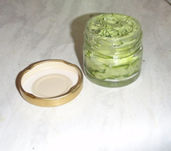For years, I would rid my front, corner flower bed of these evasive "weeds".
If I had only known...

Photo courtesy of J. Maughn.
Also Known as bedstraw, stickybobs, and goosegrass
Constituents: They are an antioxidant, anti-bacterial, and anti-inflammatory, diuretic
Energy and Flavor: Bitter, cool
Fun Facts
- Cleavers were used for bedding and it's thought Mary used them when she prepared the manger for Jesus.
- The stems were made into a sieve which milk was filtered through to infuse the health giving properties of cleavers into the milk. Parts of Sweden still do this today.

Benefits
- The use of cleavers, as well as other diuretic herbs, will increase the flow of urine and decrease the blood pressure and help purify the blood.
- Cleavers are astringent diuretics and therefore are useful in weight loss by removing excess water.
- Very rich in vitamin C
--The Way of Herbs
Lymphatic System
- increase function to improve the body's ability to flush out toxins
- flushes fluid
- enhances immune system.

Kidney Health
-
helps flush waste & toxins from kidneys
Liver Health
- protects the liver from damage and heals with it's cleansing properties
- stimulates bile production
UTIs
- diuretic properties
- demulcent action makes it ideal for calming inflammation
The Indian Journal of Research in Pharmacy and Biotechnology recommends cleavers for acute or chronic cystitis with swollen lymph nodes and uterine inflammation.
Typical Use
Internally
Tea
- 1 Cup boiling water to 2-3 tsp. of dried herbs
- Let it infuse for 10-15 minutes
- drink 2-3 time a day.

Tincture
- Fill a glass jar purple dead nettle.
- pour and cover it with a distilled alcohol, such as vodka (at least 80 proof) or vegetable glycerin to pull the medicinal qualities out.
- store in a dark, cool place for up to 6 week. shake occasionally.
- take 2-4ml up to 3 times a day

Topically
Cleavers Ointment

Salve

1. Fill a glass canning jar 1/4 to 1/2 of the way with crumbled up dried cleavers. Add additional dried herbs at this time as well.
2. Fill the jar almost to the top with your chosen oil.
3. Cover with a lid and place in a cool, dark place (pantry or cabinet) for 6 weeks.
0R
use the double boiler method on the stove for 3-4 hours. (put a smaller pan, bowl, or glass measuring cup in a larger pan with an inch or two of water in it and bring the water to a simmer.
4. add 2 cups of infused oil to a quart jar and add 1/2 cup beeswax (or amount for consistency that you'd like)
5. use double boiler method again on low until wax melts. Add any essentials oil at this time.
6. Pour hot liquid into salve containers and leave to set.
*helpful tip: put a spoon in the freezer while the wax is melting into the oil. Dip the cold spoon into the mixture when the wax is melted to see the firmness or softness of the salve before it sets.
Add oil or wax as needed for proper consistency.
Other Herbs Commonly Used in Salves and their Benefits:
- Calendula: Renowned for its skin-healing and anti-inflammatory properties, it's often used in salves for wounds, rashes, and irritated skin.
- Comfrey: Promotes skin cell regeneration and reduces inflammation, making it useful for healing wounds, bruises, and sprains.
- Plantain: Soothes irritated skin, reduces inflammation, and can be helpful for insect bites, stings, and minor wounds.
- Chickweed: Cools and soothes itchy, inflamed skin, making it beneficial for eczema, psoriasis, and diaper rash.
- Yarrow: Has antiseptic, anti-inflammatory, and astringent properties, useful for wound healing and reducing bleeding.
- Lavender: Calming and soothing to the skin, with antiseptic and anti-inflammatory properties, often used in salves for relaxation and skin irritation.
- St. John's Wort: Has anti-inflammatory and pain-relieving properties, potentially helpful for nerve pain, wounds, and skin irritations.
Add comment
Comments